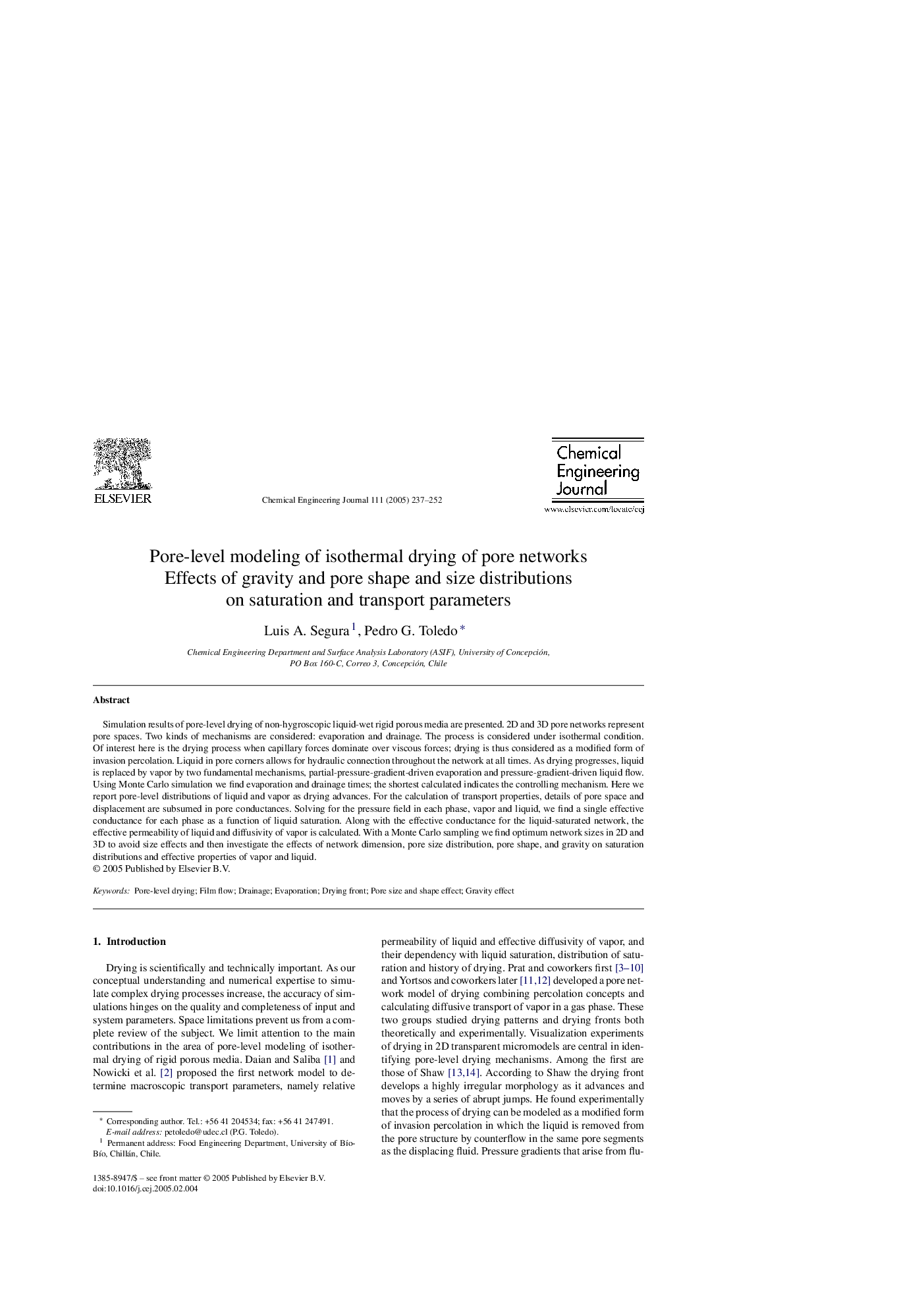| Article ID | Journal | Published Year | Pages | File Type |
|---|---|---|---|---|
| 9623788 | Chemical Engineering Journal | 2005 | 16 Pages |
Abstract
Simulation results of pore-level drying of non-hygroscopic liquid-wet rigid porous media are presented. 2D and 3D pore networks represent pore spaces. Two kinds of mechanisms are considered: evaporation and drainage. The process is considered under isothermal condition. Of interest here is the drying process when capillary forces dominate over viscous forces; drying is thus considered as a modified form of invasion percolation. Liquid in pore corners allows for hydraulic connection throughout the network at all times. As drying progresses, liquid is replaced by vapor by two fundamental mechanisms, partial-pressure-gradient-driven evaporation and pressure-gradient-driven liquid flow. Using Monte Carlo simulation we find evaporation and drainage times; the shortest calculated indicates the controlling mechanism. Here we report pore-level distributions of liquid and vapor as drying advances. For the calculation of transport properties, details of pore space and displacement are subsumed in pore conductances. Solving for the pressure field in each phase, vapor and liquid, we find a single effective conductance for each phase as a function of liquid saturation. Along with the effective conductance for the liquid-saturated network, the effective permeability of liquid and diffusivity of vapor is calculated. With a Monte Carlo sampling we find optimum network sizes in 2D and 3D to avoid size effects and then investigate the effects of network dimension, pore size distribution, pore shape, and gravity on saturation distributions and effective properties of vapor and liquid.
Related Topics
Physical Sciences and Engineering
Chemical Engineering
Chemical Engineering (General)
Authors
Luis A. Segura, Pedro G. Toledo,
